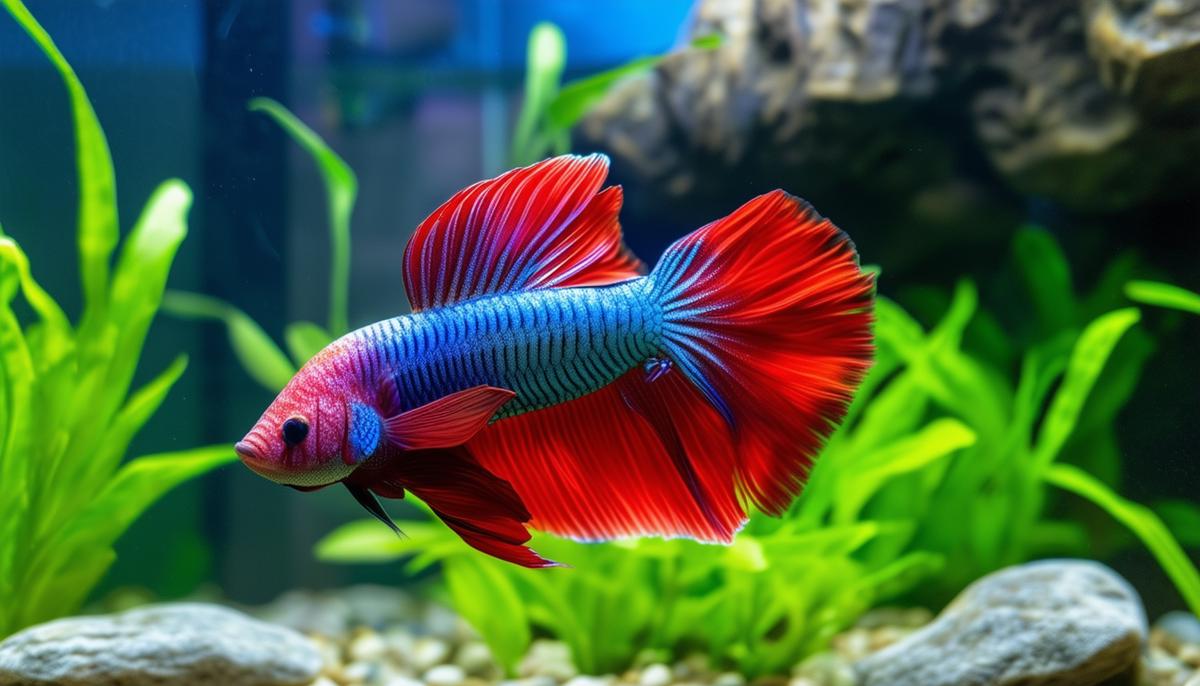Are Betta Fish Aggressive?
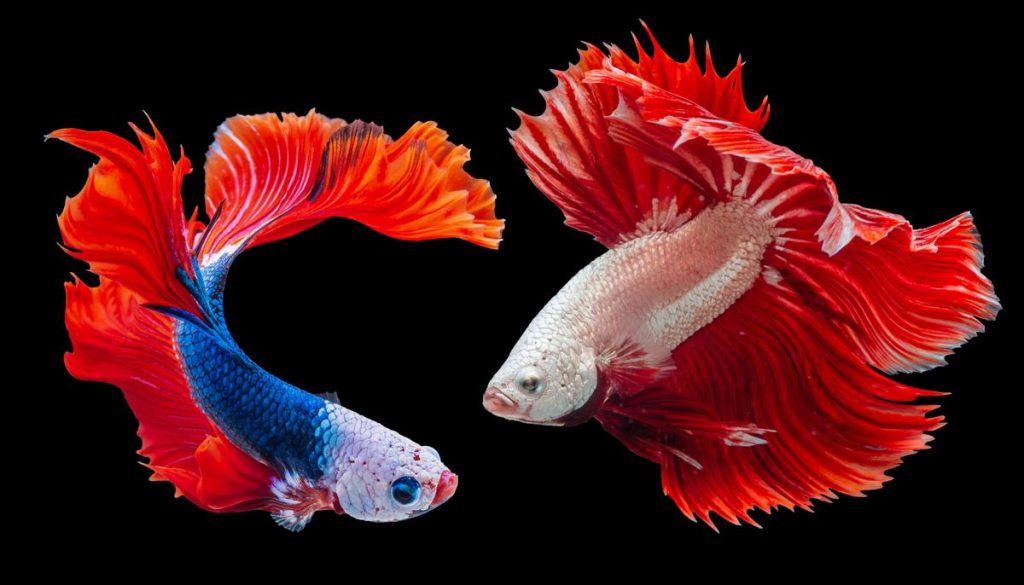
What triggers Betta fish aggression?
Betta fish aggression is triggered by several interlinked factors. Environmental conditions play a crucial role; confined spaces and limited resources amplify stress and competitive behaviors. Genetics heavily influence their aggressive nature. Studies, like those comparing fighter strains bred for aggression with wild-type strains, demonstrate that selective breeding has magnified these aggressive traits to enhance performance in controlled fights. Consistent aggressive behaviors are observed under both laboratory and natural conditions, suggesting a strong genetic predisposition towards aggression.
The color of a Betta also influences its aggression levels. Research highlights that Betta fish with certain colors, such as blue, exhibit more intense and frequent aggression compared to others like red Betta fish.2 The visibility and contrast of their colors in their natural murky water habitats likely contributes to this variance.
Managing Betta aggression involves strategic environmental structuring and social management. Isolating males, providing ample space, and minimizing visual contact with other aggressive individuals can decrease confrontation. Adjusting tank setups to eliminate reflective surfaces that could trigger aggression towards their own reflection is also beneficial. For mitigating genetically predisposed aggression, careful selection away from extreme aggressive traits in breeding practices might be considered.
Each element from genetics to tank setup influences Betta aggression, requiring a multifaceted approach to management to ensure their well-being in both natural environments and captivity.
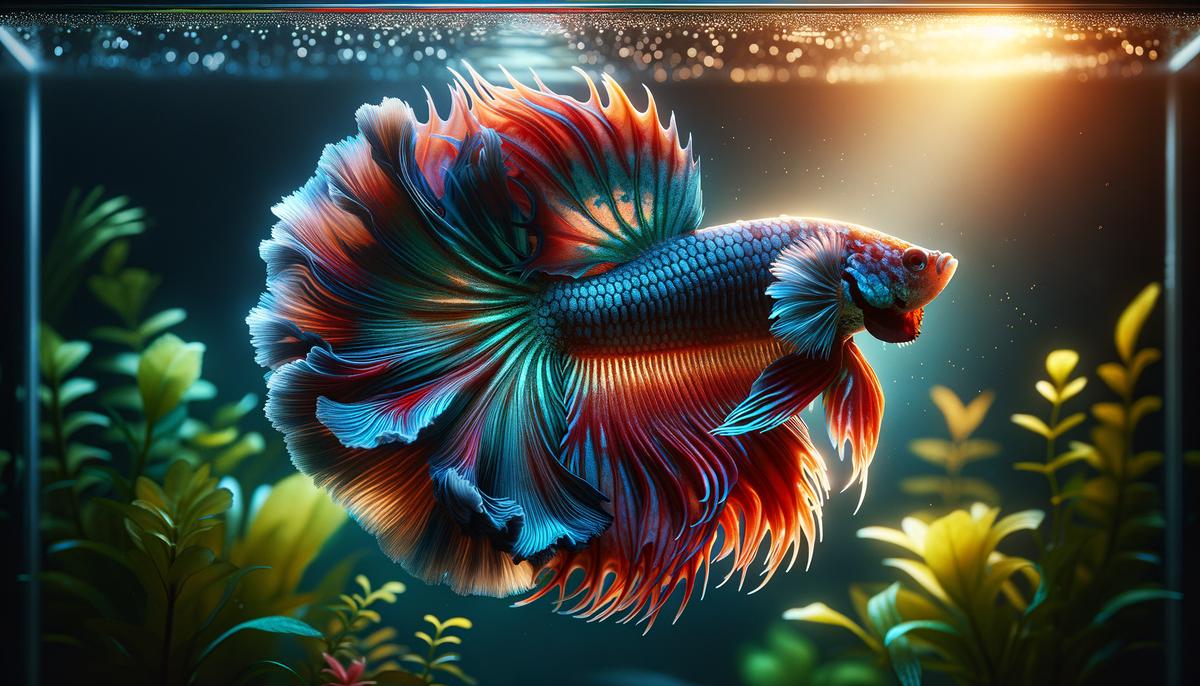
How do Bettas display aggression?
Aggression in Bettas is displayed primarily through flaring gills and operculums to appear larger, which is a common threat display. These fish also engage in fin biting and mouth-locking during interactions, which are direct forms of physical aggression. This behavior is largely territorial, linked to competition for resources such as food and mating opportunities.
Beyond visual displays, physical contact is also a significant aspect of Betta aggression. Biting, particularly fin biting, is common. This can lead to torn fins and can escalate to more severe physical damage if the fights are prolonged. Mouth-locking is another behavior where two Bettas engage directly, gripping each other’s mouths, which is a strong display of dominance and fighting prowess.
Lateral displays are another behavioral aspect where the Betta turns its body sideways to maximize its profile visibility to the opponent. This, coupled with swimming in a manner that showcases their full body length, serves to intimidate other fish without immediate physical contact. These displays often precede or occur simultaneously with flaring and other aggressive interactions.
These aggression-related behaviors serve multiple functions:
- They establish hierarchical social orders
- They mitigate actual physical conflict by determining dominance via display rather than injury
- They secure essential resources for survival and reproduction
Within the competitive paradigms staged by breeders or in naturally formed Betta territories, understanding and managing these displays is crucial in ensuring the welfare and health of Betta populations.
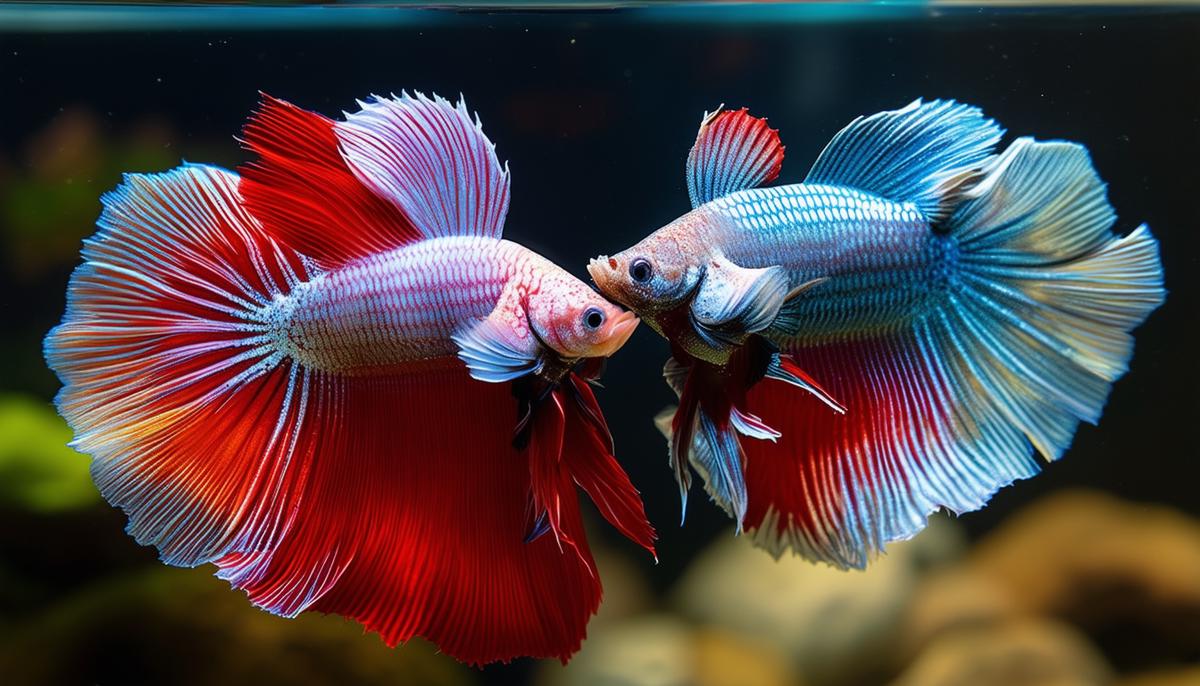
Does Betta color influence aggression?
The correlation between the color of Betta fish and their aggression levels has been an area of keen scientific interest, emphasizing how intrinsic traits such as coloration can influence survival tactics and social dynamics. Studies specifically targeting the aggression patterns in colored variants of Betta fish reveal that coloration significantly affects their behavior and interaction outcomes, particularly between blue and red males.2
Blue Bettas are observed to exhibit higher levels of aggression compared to their red counterparts. This elevated aggression includes more frequent and prolonged flaring, enhanced lateral displays, and an increased likelihood of initiating combat. This might be linked to the visibility of their blue hues in their native murky aquatic environments in Southeast Asia, perhaps giving these individuals a visual advantage in detecting and confronting rivals.
Contrastingly, red Bettas, while still aggressive, tend to manifest somewhat less intense competitive behaviors. This doesn’t necessarily suggest that the red Bettas are less territorially inclined, but rather their aggression might not be as overt or consistently activated compared to blue Bettas. The reasons for this variance are subject to ongoing investigation, although theories suggest that the red pigment might provide a different method of camouflage or social signaling that influences Betta interactions differently.
The color of these fish plays into their survival strategies, where their vibrant colors serve as important cues within both competitive and mating arenas. From an evolutionary perspective, being vividly colored can be a double-edged sword, enhancing visibility to potential mates, competitors, and predators. For blue Bettas, their striking color seems to function primarily as an intimidation feature within territorial disputes. The survival strategy for red Betta might rely more on a balance between visibility during conflict and perhaps less detectability in densely vegetated or shadowed aquatic environments when avoiding threats.
These findings offer remarkable insights into the use of color as a strategy in aquatic life conflicts. Understanding how different coloration impacts aggression and social interaction in Bettas enriches our appreciation of their behavioral ecology and informs better practices for those breeding and keeping Betta fish in captivity, aiming for minimized stress and aggression in tank environments.
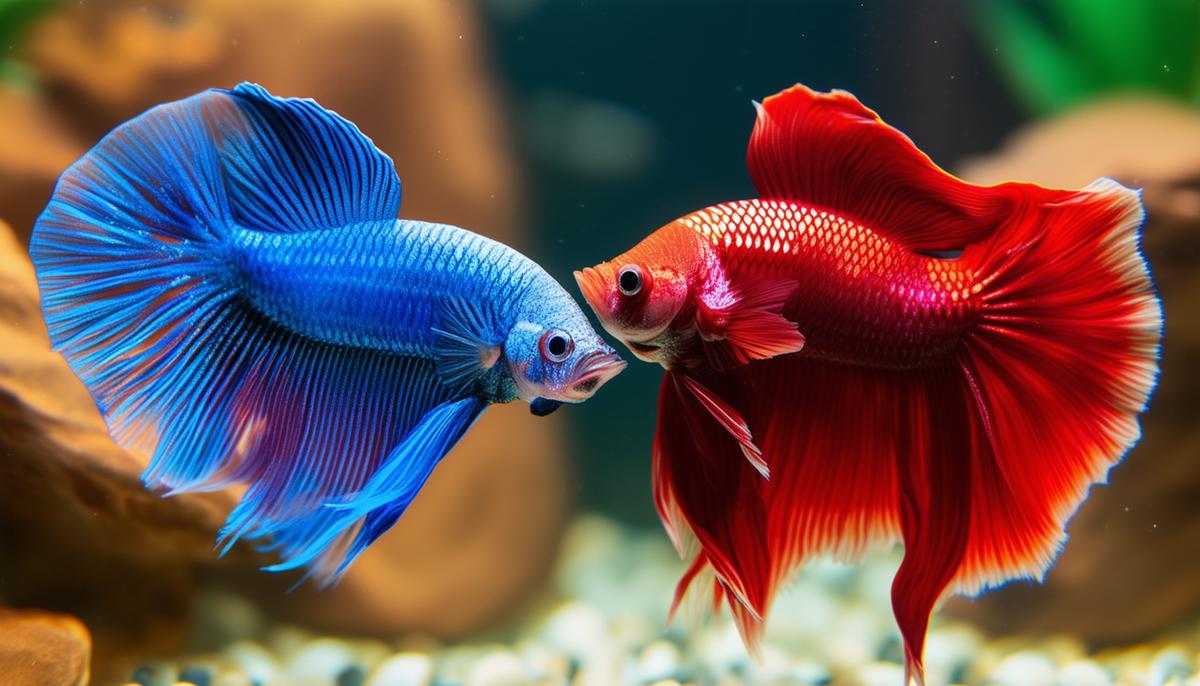
What are the consequences of Betta aggression?
Chronic aggression in Betta fish, often stemming from the intense competitions for which these creatures are renowned, brings about significant impacts on their overall health and welfare. The high levels of stress incurred during these aggressive interactions can lead to decreased immune functioning, making Bettas more susceptible to diseases. Prolonged exposure to stressors, such as persistent aggression or the conditions often found in staged fights and overcrowded tanks, can alter cortisol levels – a primary stress hormone – which over time may negatively affect their metabolic health, leading to reduced longevity and vitality.3
In settings of staged fighting for entertainment purposes, the aggressive behavior of Bettas is encouraged and often escalated to extreme levels. This leads to serious welfare concerns as injuries, such as torn fins and damaged scales, are common. Physically, these are detrimental and can lead to secondary infections if not properly managed. The mental state of these animals is invariably affected. The constant anticipation of combat in such environments can induce chronic stress, fundamentally altering their behavior and possibly leading to a diminished quality of life.
For Bettas kept in home aquariums, understanding and managing their natural aggression is vital. Inappropriately housing male Bettas together, or in environments where they are in constant visual contact with perceived rivals without adequate separation, can lead to sustained aggressive behaviors. This disrupts the tranquil environment desired in home aquariums and exacerbates stress-related behaviors in these fish.
The implications extend into breeding practices. Aggression is a notable selection trait; however, without careful consideration, breeding solely for heightened aggression can result in strains of Bettas that may be more difficult to manage and possibly more prone to health issues associated with stress. Such breeding practices often overlook the balanced temperament necessary for the well-being of Bettas in less competitive and more communal settings, such as typical home aquariums.
While the aggressive nature of the Siamese fighting fish can be a captivating display of natural behavior, it is imperative for breeders, keepers, and enthusiasts to consider the consequences of such aggression. Extremely aggressive behaviors, fostered by both natural disposition and environmental conditions, if not properly managed, could detrimentally impact the welfare and lifespan of these beautifully spirited fish.
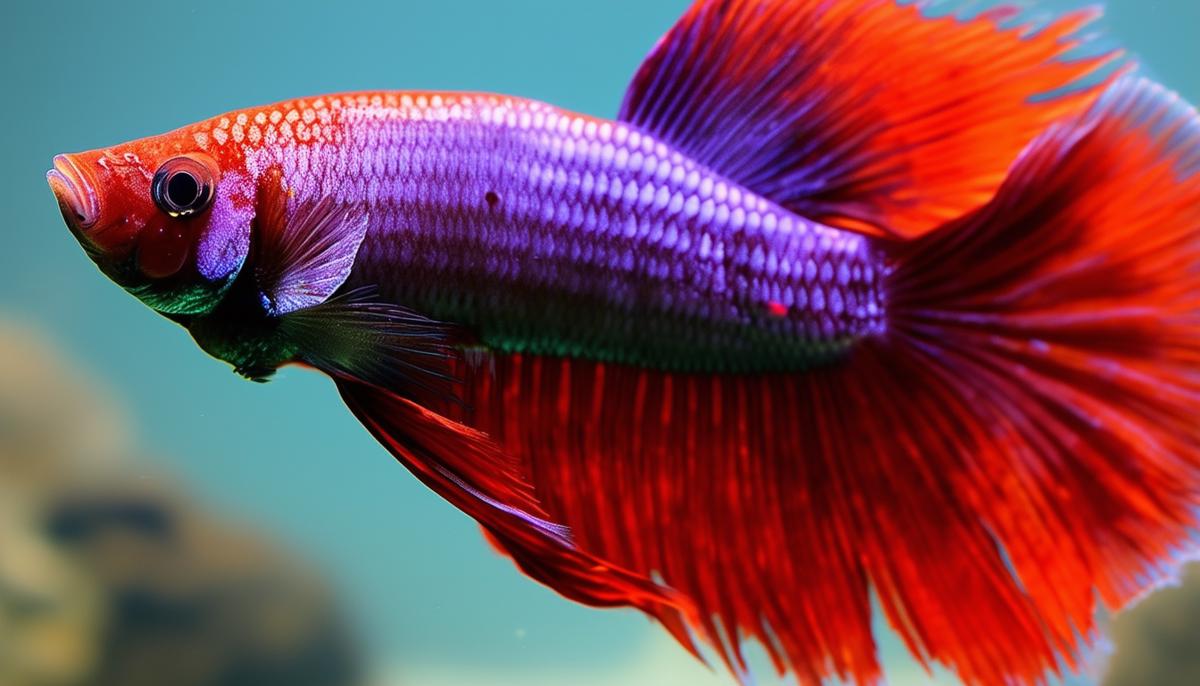
Can Betta aggression be managed?
Managing aggression in Betta fish, particularly in domestic aquarium settings, necessitates thoughtful strategies that harmonize with their natural behaviors and needs. One of the central approaches involves environmental enrichment—a method aimed at stimulating a Betta’s mental and physical environment in ways that channel their aggression constructively and reduce stress. Introducing plants, caves, and other structures furnishes shelter and enhances their ecological mimicry, providing hideaways that curb excessive territorial aggression by allowing a fish to retreat and secure its domain.
Tank setup is also essential in managing Betta aggression. Adequate space is imperative, and though Bettas can survive in small spaces, providing a larger aquarium can significantly dampen aggressive behaviors. The absence of congested or overly limited swimming room diminishes aggressive encounters. The environment should include visual barriers that help break line of sight between aggressive individuals. Employing frosted or adorned glasses can contribute immensely to limiting visual contact with potential rivals. The placement of tanks should avoid areas with frequent movement and direct sunlight which may cause undue stress and stimulate aggressive tendencies.
Regarding companion selection, while males should never be housed together given their innate aggression, careful consideration must be applied when introducing other species. Fish that are timid or smaller may easily become targets, while those with long, flowing fins might be mistaken for another Betta and attacked. It’s advisable to accompany Bettas with species that are:
- Neither aggressive nor too passive
- Physically distinctive enough from Bettas not to trigger territorial behaviors
Managing Betta aggression isn’t just about employing an interventional tool but ensuring a strategy that incorporates a suite of compatible, considerate methods reflective of their natural behaviors and needs. By shaping their environment constructively and mindfully incorporating innovations, we encourage healthier, stress-minimized living conditions that can significantly alleviate the hazardous inclines of aggression in captive Betta fish.
